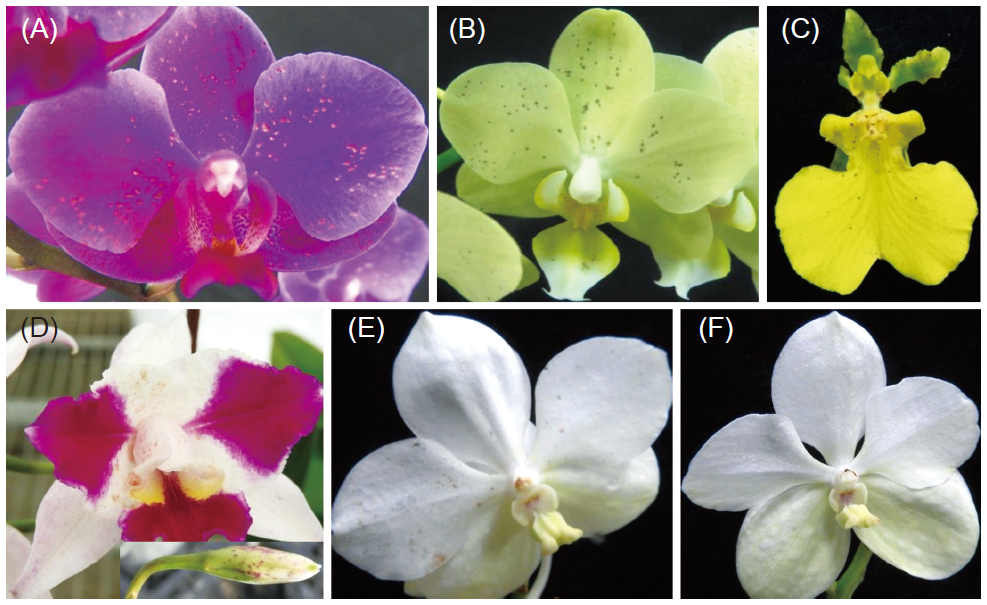All issues

Author:Chiao-Wen Huang, Jin-Hsing Huang, Jhih-Nung Tsai, Li-Hsiang Chung, and Ting-Fang Hsieh*
Abstract:
In April 2017, flower diseases of Phalaenopsis (Sogo Yukidian ‘V3’) occurred in Tainan area with the symptoms showed brown small spots on petal, sometimes sunken, and about 1 mm or less in diameter without expanding. It seriously affected quality of ornamental flowers and cut flowers. The pathogen isolated from the diseased tissue produced dark grey mycelium on potato dextrose agar (PDA). Conidium is ellipsoidal to fusiform, dark brown, and with hilum. The causative fungus was identified as Exserohilum rostratum (Drechsler) Leonard & Suggs based on symptoms, morphological characteristics and ITS rDNA sequence. The pathogen not only harmed the white flowers of Phalaenopsis Sogo Yukidian ‘V3’, but also caused symptoms on the petals of Phalaenopsis Queen Beer ‘Mantefon’, Phalaenopsis Green Pixie ‘Ever Green’, Oncidesa Gower Ramsey ‘Honey Angel’, Cattleya Chien Ya ‘Ocean’ and Vanda Princess ‘Mikasa White’. The optimal temperature was 28℃ for mycelial growth of Exserohilum rostratum and 24–36℃ for spore germination. Mycelial growth of the pathogen was effectively inhibited more than 90% by oxine-copper, procymidone, difenoconazole and Iprodione with the concentration at 10 mg a.i. L-1. Spore germination of pathogen was inhibited by oxine-copper, copper (II) hydroxide, mancozeb and chlorothalonil with the concentration at 10 mg a.i. L-1. This is the first report of Phalaenopsis petal spot disease caused by E. rostratum in Taiwan.
Key words:Phalaenopsis, Petal spot, Fungicide screening
Download:![]() PDF Links
PDF Links
- 1. Development of Tractor-Mounted Seedling Transplanter for Sweet Potato
- 2. Synergistic Effect of Additional Gas on the Toxicity of Phosphine to Sitophilus oryzae and Sitophilus zeamais (Coleoptera: Dryophthoridae)
- 3. Effects of Temperature and Solar Radiation on Growth Traits and Plant Elements in Purple Leafy Sweet Potato
 Submit your manuscript
Submit your manuscript
 Guide for authors
Guide for authors